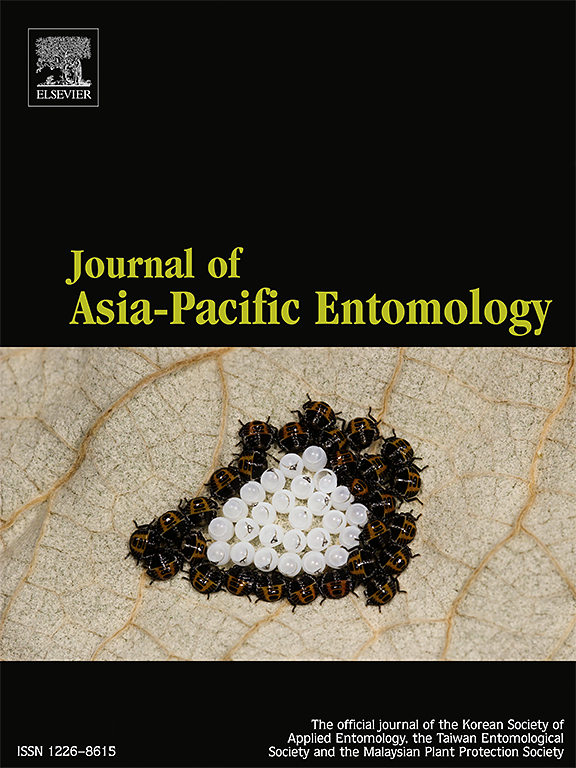A novel ciprofloxacin-degrading bacteria Phytobacter diazotrophicus SMX isolated from silkworm faeces: characteristics, degradation metabolites, and toxicity assessment
IF 1.3
3区 农林科学
Q3 ENTOMOLOGY
引用次数: 0
Abstract
Ciprofloxacin (CIP), a feed additive commonly used in the aquaculture industry, tends to persist in the environment, potentially causing pollution. In this study, a novel CIP-degrading bacterium, designated SMX, was isolated from fermented silkworm excrement and identified by whole-genome sequencing. The antibiotic degradation efficiency was assessed using high-performance liquid chromatography (HPLC), and the degradation conditions were optimized. The degradation products were identified using ultra-high-performance liquid chromatography-mass spectrometry (UPLC-QTOF-MS/MS), and their toxicity was evaluated using the ecological structure–activity relationship (ECOSAR) program. The findings revealed that the CIP-degrading bacterium SMX belongs to Phytobacter diazotrophicus. The optimal conditions for CIP degradation by strain SMX were as follows: initial CIP concentration, 2.5 mg/L; temperature, 30 °C; and pH 8.0, with glucose as the primary external carbon source. The highest degradation efficiency of CIP by Phytobacter diazotrophicus SMX was 87.37% after 72 h. Four intermediate metabolites (IP1, IP2, IP3, and IP4) were identified. These metabolites had no toxic effect on the environment. In summary, SMX might be an efficient and safe CIP-degrading bacterium, poised to play a significant role in preventing and mitigating antibiotic cross-contamination.

从家蚕粪便中分离的新型环丙沙星降解细菌重氮营养菌SMX:特性、降解代谢物和毒性评估
环丙沙星(CIP)是水产养殖业常用的饲料添加剂,易在环境中持续存在,可能造成污染。本研究从发酵家蚕粪便中分离到一种新的cip降解细菌SMX,并通过全基因组测序对其进行了鉴定。采用高效液相色谱法(HPLC)评价其对抗生素的降解效率,并对其降解条件进行优化。采用超高效液相色谱-质谱法(UPLC-QTOF-MS/MS)对降解产物进行鉴定,并采用生态构效关系(ECOSAR)程序对其毒性进行评价。结果表明,cip降解菌SMX属重氮营养菌。菌株SMX降解CIP的最佳条件为:初始CIP浓度为2.5 mg/L;温度:30℃;pH 8.0,葡萄糖为主要外部碳源。重氮营养菌SMX在72 h后对CIP的最高降解率为87.37%,鉴定出4种中间代谢物(IP1、IP2、IP3和IP4)。这些代谢物对环境没有毒性作用。综上所述,SMX可能是一种高效、安全的cip降解菌,有望在预防和减轻抗生素交叉污染方面发挥重要作用。
本文章由计算机程序翻译,如有差异,请以英文原文为准。
求助全文
约1分钟内获得全文
求助全文
来源期刊

Journal of Asia-pacific Entomology
Agricultural and Biological Sciences-Insect Science
CiteScore
2.70
自引率
6.70%
发文量
152
审稿时长
69 days
期刊介绍:
The journal publishes original research papers, review articles and short communications in the basic and applied area concerning insects, mites or other arthropods and nematodes of economic importance in agriculture, forestry, industry, human and animal health, and natural resource and environment management, and is the official journal of the Korean Society of Applied Entomology and the Taiwan Entomological Society.
 求助内容:
求助内容: 应助结果提醒方式:
应助结果提醒方式:


